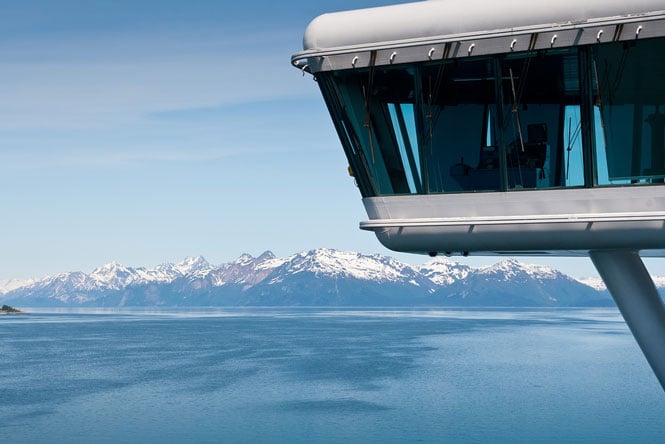
Most people have a vision of the ship's captain standing behind a big wooden steering wheel at the front of the ship, one hand on the wheel, another holding a telescope. The reality is very different.
The captain is actually in charge of the whole ship, so his tasks stretch far beyond simply navigating the ship. In fact, a better job title might be "ship manager". The captain is responsible for moving this floating city from port to port, with thousands of passengers and crew relying on his leadership. It’s no mean feat!
The captain does indeed get to drive the ship, often taking charge as it moves in and out of port. Once safely out at sea, the ship can be on autopilot for much of the time – just like a plane. The captain also doesn't work alone; he has a team of officers to help. At any one time, you might find eight officers on the "bridge". This will include a navigator and co-navigator who plan routes and speeds, and the all-important lookout sailor.
The captain isn't always on the same ship. They'll switch between different ships in the cruise line’s fleet, and may have less than 12 hours before the next trip. Every time they take charge of a new ship, the captain must learn how to manoeuvre that specific vessel, though many of the other procedures remain the same.
As commander of the cruise ship, the captain has a 24/7 job to do. The majority of their time is taken up with management tasks. With a few thousand passengers and anywhere up to a thousand crew, life can move very quickly on a cruise ship and the captain needs to be on top of things. Luckily, modern technology makes this simpler than ever and the captain can easily communicate with his crew around the clock.
As CEO of the ship, most captains have three senior officers directly reporting to them, including the Hotel Director and the Chief Engineer. The former is in charge of all things to do with entertainment and accommodations, while the latter takes care of the technical side of the ship. The staff captain (deputy captain) is second in command and looks after the bridge, the ship’s navigation and the sailors.
Most captains will probably have been in the industry for many years, decades even, starting out as a cadet and rising through the officer ranks. There’s plenty of training involved, both before becoming captain and during.
As with any job, there are pros and cons to being a cruise ship captain. One perk is that there is always something to see. The captain gets the best view in the house when it comes to whale watching and other wildlife encounters, and no day is the same as the next.
However, a definite downside is that captains can be out at sea and away from their families for weeks or months at a time. And while they’re on the ship, they won’t have much time to themselves.
Many cruise lines give special passengers a chance to meet the captain on a tour of the ship. You'll find him in the "bridge", but only at the captain’s discretion and if he deems it safe.